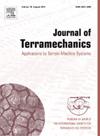使用来自实时虚拟环境的自动注释数据进行自主转发的日志检测
IF 3.7
3区 工程技术
Q3 ENGINEERING, ENVIRONMENTAL
引用次数: 0
摘要
以前,用于自主林业作业的目标探测器主要是通过对物理手动注释数据进行训练来开发的,这既耗时又昂贵。由于虚拟模型中的真实情况是已知的,因此可以对训练数据进行自动注释,从而可以创建更大的训练数据集,同时还可以提高时间和成本效率。在这项工作中,Unity中的虚拟环境用于与物理林业车辆的实时数字双胞胎共同模拟,以生成逼真的自动注释训练数据,由车载立体摄像机捕获。首先,证明了在物理数据上训练的日志检测器可以检测虚拟环境中的日志。其次,使用虚拟和物理数据的不同份额来训练新的检测器。结果表明,仅使用虚拟数据训练的检测器可以学习检测物理世界中的日志。此外,虚拟预训练可以提高物理训练和测试检测器的性能,无论是在物理训练数据可用性较低的情况下,还是在领域泛化方面。详细的检测器性能分析还强调了未来改进的进一步潜力和机会。此外,具有实时功能的虚拟模型可以利用不同级别的硬件在环实现未来的机器学习任务。本文章由计算机程序翻译,如有差异,请以英文原文为准。
Log detection for autonomous forwarding using auto-annotated data from a real-time virtual environment
Object detectors for autonomous forestry operations have previously been developed mainly by training on physical manually annotated data, which is both time-consuming and costly. Since the ground truth in the virtual model is known, the training data can be auto-annotated, enabling the creation of larger training datasets, while also improving time and cost efficiency. In this work, a virtual environment in Unity is used in co-simulation with a real-time digital twin of a physical forestry vehicle, to generate realistic auto-annotated training data, as captured by an onboard stereo camera. First, it is shown that a log detector trained on physical data can detect logs in the virtual environment. Second, new detectors are trained, using different shares of virtual and physical data. It is shown that a detector trained using only virtual data, can learn to detect logs in the physical world. Moreover, virtual pre-training is shown to improve the performance of physically trained and tested detectors, both at low availability of physical training data, and in terms of domain generalization. A detailed detector performance analysis also highlights further potential and opportunities for future improvements. Furthermore, the real-time capable virtual models enable future machine learning tasks utilizing different levels of Hardware-in-the-Loop.
求助全文
通过发布文献求助,成功后即可免费获取论文全文。
去求助
来源期刊

Journal of Terramechanics
工程技术-工程:环境
CiteScore
5.90
自引率
8.30%
发文量
33
审稿时长
15.3 weeks
期刊介绍:
The Journal of Terramechanics is primarily devoted to scientific articles concerned with research, design, and equipment utilization in the field of terramechanics.
The Journal of Terramechanics is the leading international journal serving the multidisciplinary global off-road vehicle and soil working machinery industries, and related user community, governmental agencies and universities.
The Journal of Terramechanics provides a forum for those involved in research, development, design, innovation, testing, application and utilization of off-road vehicles and soil working machinery, and their sub-systems and components. The Journal presents a cross-section of technical papers, reviews, comments and discussions, and serves as a medium for recording recent progress in the field.
 求助内容:
求助内容: 应助结果提醒方式:
应助结果提醒方式:


